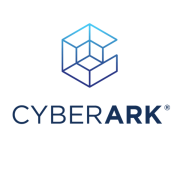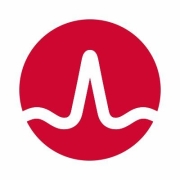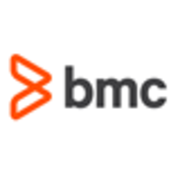Mainframe Security is essential for protecting sensitive data and ensuring system integrity across industries. Providing a secure environment for operations is crucial as organizations increasingly rely on mainframes to handle substantial workloads.
With the growing complexity of IT environments, Mainframe Security solutions play a crucial role in ensuring data privacy and operational continuity. They integrate with existing infrastructures to provide robust protection against both external threats and internal vulnerabilities. Comprehensive threat detection, real-time monitoring, and compliance management feature strongly in these solutions.
What are the key features of Mainframe Security solutions?Mainframe Security solutions are widely implemented across sectors such as finance, healthcare, and retail. These industries benefit from enhanced security capabilities tailored to their specific operational risks and regulatory requirements, enabling them to protect customer data and streamline audits.
Organizations leverage Mainframe Security to ensure their systems are fortified against cyber threats. This category aids in maintaining data integrity and trust, ultimately leading to business resilience and operational efficiency.
| Product | Market Share (%) |
|---|---|
| IBM Security zSecure | 16.8% |
| Top Secret | 15.2% |
| IBM Resource Access Control Facility | 14.0% |
| Other | 54.0% |
















Mainframe security encompasses various practices, technologies, and measures implemented to safeguard computer systems from unauthorized access, data breaches, and other security threats. They are powerful computers used by enterprises to process and store vast amounts of critical data and run mission-critical applications. Protecting them is of paramount importance, and mainframe security focuses on ensuring the confidentiality, integrity, and availability of data while preventing malicious activities.
Physical security is also important in this process. Mainframes are often housed in secure data centers with restricted access. They employ measures like controlled entry, environmental controls, and backup power supplies to prevent unauthorized physical access and protect against natural disasters. By securing the physical environment, the mainframe systems themselves are shielded from foreign tampering or theft.
Access controls are another fundamental aspect of mainframe security. Strict control is implemented to restrict system access to only authorized individuals. Authentication mechanisms, such as passwords, tokens, or biometrics, are employed to verify the identity of users and ensure that only legitimate persons can access the mainframe system and its resources.
Specific user and group permissions are utilized within mainframe security to assign privileges based on roles and responsibilities. Role-based access controls (RBAC) are commonly implemented to ensure that users have appropriate access levels and permissions aligned with their job functions. By granting privileges on a need-to-know basis, organizations can minimize the potential for data breaches.
Encryption is another critical component of mainframe security. Sensitive data is often encrypted to protect it from unauthorized disclosure. This transforms data into an unreadable format, and it can be applied to data at rest and in transit. Even if unauthorized individuals gain access to the data, they cannot decipher it without the encryption keys, providing an additional layer of protection.
Mainframe security also incorporates Intrusion Detection and Prevention Systems (IDPS) to monitor the system for suspicious or malicious activities. These systems continuously analyze network traffic, log files, and system events to identify potential attacks. If an anomaly is detected, the IDPS can alert administrators and take preventive actions, such as blocking or terminating the suspicious activity.
Unauthorized access is a significant risk to mainframe security. Attackers may attempt to gain access to a company’s systems through compromised user credentials, weak authentication mechanisms, or inadequate access controls. Without proper safeguards, these individuals can infiltrate the entire system, leading to significant data breaches, unauthorized modifications, and misuse of critical resources. To avoid this, organizations must implement robust access controls, strong authentication methods, and regular user access reviews to mitigate this risk.
Insider threats pose a significant challenge to mainframe security. Insiders, such as employees, contractors, or partners with legitimate access to the mainframe, can sometimes intentionally or unintentionally misuse their privileges. This can result in unauthorized data access, system changes, or theft of sensitive information. In such cases, enterprises need to implement monitoring mechanisms, user behavior analytics, and least privilege principles to detect and mitigate insider threats effectively.
Data breaches are a common risk associated with a company’s systems. Mainframes store vast amounts of sensitive data, making them attractive targets for attackers. Data breaches can occur due to vulnerabilities in applications, weak encryption practices, or insufficient access controls. Breached information can lead to large financial losses, reputational damage, and regulatory non-compliance. This is exactly why organizations must implement robust security controls, encryption, and regular vulnerability assessments to prevent data breaches and protect sensitive information.
Malware and ransomware attacks are frequent ways to target mainframe systems. While often considered secure, they are not immune to malware infections or ransomware attacks. Malicious attackers can infiltrate the system through various means, such as phishing emails, infected external devices, or compromised network connections. Once inside, malware can disrupt operations, steal data, or encrypt critical files for ransom. Implementing robust malware detection tools, network security measures, and user awareness training to protect against these threats is another crucial step an enterprise must take.
The lack of timely patching and updates poses a significant risk to mainframe security. Failure to apply patches and updates promptly can leave the system vulnerable to known security vulnerabilities. Attackers can exploit this to gain unauthorized access, launch attacks, or compromise data integrity. Establishing robust patch management processes, closely monitoring vendor security advisories, and regularly updating mainframe software and firmware to mitigate this risk effectively.
Implementing Mainframe Security best practices involves several key steps to ensure robust protection. Start by updating and patching your mainframe systems regularly to defend against vulnerabilities. Utilize robust authentication mechanisms such as multifactor authentication to enhance user access control. Regularly conduct security audits and compliance checks to identify and address any weaknesses. Implement encryption for data both at rest and in transit to protect sensitive information. Employ dedicated security monitoring tools to detect and respond to threats in real-time. Training your team on security awareness and best practices is also crucial in maintaining an effective Mainframe Security posture.
What are common threats to Mainframe Security?Mainframe systems, while highly reliable, are not immune to threats. Some common threats include unauthorized access due to weak authentication processes, insiders with malicious intent exploiting privileged access, and data breaches stemming from unencrypted data. There is also the risk of outdated software that exposes the system to known vulnerabilities. Besides, denial-of-service attacks can disrupt services, while improper configuration and management can lead to security gaps. Regular assessments, updated software, and monitoring are crucial to mitigate these threats effectively.
How can encryption enhance Mainframe Security?Encryption plays a critical role in enhancing Mainframe Security by protecting data confidentiality and integrity. By encrypting data at rest, you ensure that sensitive information stored on the mainframe is shielded from unauthorized access. Similarly, encrypting data in transit helps secure the information exchanged between the mainframe and other systems or networks. Advanced encryption protocols make it extremely difficult for attackers to decipher the data, thus significantly reducing the risk of data breaches. Encryption, combined with comprehensive access controls, forms a robust security framework for mainframe systems.
Why is identity and access management important in Mainframe Security?Identity and access management (IAM) is crucial in Mainframe Security as it ensures that only authorized personnel can access sensitive systems and data. Effective IAM involves implementing measures like strong password policies, multifactor authentication, and role-based access controls. These measures help secure the mainframe by restricting access based on user roles, thereby minimizing the risk of unauthorized access and potential security breaches. IAM tools also provide the ability to monitor and log access activities, allowing you to detect and respond to suspicious actions promptly.
What role do security audits play in Mainframe Security?Security audits are essential in maintaining a strong Mainframe Security posture. They involve comprehensive reviews and assessments of the mainframe's security policies, procedures, and infrastructure. Regular audits help identify potential vulnerabilities, misconfigurations, and non-compliance with industry standards. By conducting security audits, you can proactively address any discovered issues, ensuring the mainframe remains secure against evolving threats. These audits also contribute to compliance assurance, which is vital for organizations subject to regulatory requirements.